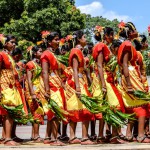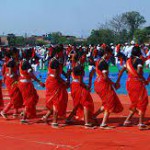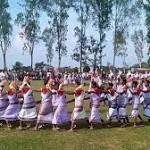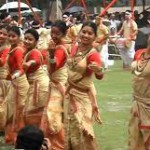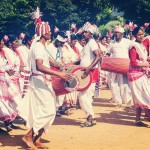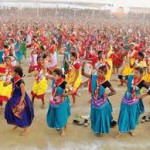Limited Time Offer!
For Less Than the Cost of a Starbucks Coffee, Access All DevOpsSchool Videos on YouTube Unlimitedly.
Master DevOps, SRE, DevSecOps Skills!
Karma Dance of Madhya Pradesh: A Celebration of Nature and Tradition
The Karma Dance, also known as Karma Naach, is one of the most popular and vibrant traditional folk dances of Madhya Pradesh. Deeply rooted in the cultural heritage of the tribal communities of the region, this dance form celebrates nature, harvest, and life itself. The dance is not just a form of entertainment but also a medium to express devotion, joy, and gratitude towards nature, particularly the Karma tree—believed to be sacred.
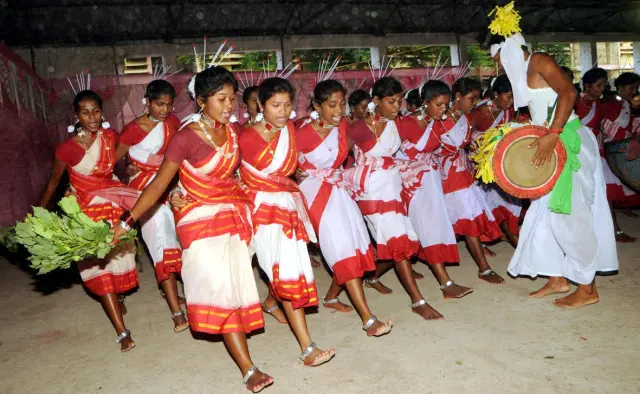
Summarized version of all the details about Karma Dance of Madhya Pradesh :
| Category | Details |
|---|---|
| Origin | Performed by Gond, Baiga, and Oraon tribes of Madhya Pradesh. Celebrates the Karma Tree and nature. |
| Occasion | Primarily performed during the Karma Festival (August-September), also during weddings and social gatherings. |
| Cultural Significance | Honors the Karma Tree symbolizing prosperity, fertility, and protection. A celebration of harvest and community bonding. |
| Dance Formation | Performed in circular formations, representing the circle of life. Men and women dance holding hands and moving rhythmically. |
| Movements & Style | Simple footwork, swaying movements, and twirling in unison, reflecting harmony with nature. |
| Instruments | Mandar, Timki, Jhumki, Dhol are the main instruments providing rhythm. |
| Music & Song | Songs are about love, nature, and folklore, sung in call-and-response format. |
| Costumes | Women wear colorful sarees with tribal jewelry; men wear dhotis and turbans. |
| Significance of Karma Tree | The tree is a symbol of life, growth, and renewal, central to the dance. It is worshiped during the festival. |
| Modern Relevance | Performed at national festivals and cultural events. Promoted by cultural organizations in Madhya Pradesh. |
| People’s Experience | Described as immersive, joyful, and a strong reflection of community bonding. Offers an emotional connection to nature and spirituality. |
| Best Time to Witness | During the Karma Festival (August-September) and other tribal celebrations. |
| Location | Tribal areas of Madhya Pradesh including Mandla, Balaghat, and Chhattisgarh. |
Origin and Cultural Significance
Karma Dance is primarily performed by the Gond, Baiga, and Oraon tribes of Madhya Pradesh. It is named after the Karma tree, which holds spiritual and religious importance in tribal cultures. The tree is associated with fertility, prosperity, and protection. The dance is typically performed during the Karma Festival, a significant event for these tribes, marking the onset of the harvest season. This festival is celebrated to honor the gods and seek their blessings for a bountiful harvest.
The dance is also a symbol of community bonding, where men and women come together to celebrate life and the richness of nature. Over the years, Karma Dance has transcended its tribal roots and is now performed across various festivals and cultural events, showcasing the traditional vibrancy of Madhya Pradesh.
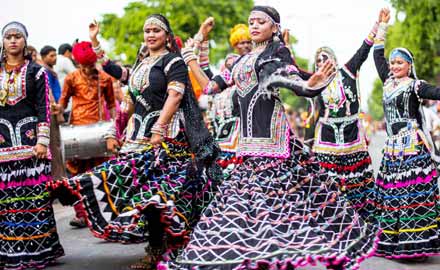
When and Where is Karma Dance Performed?
The Karma Dance is performed during the Karma Festival, which usually falls in August or September, depending on the agricultural cycle. The festival marks the beginning of the harvest season, and the dance is performed as a way of thanking the deities for a good crop and praying for prosperity in the future.
While the festival is the primary occasion for Karma Dance, it is also performed during other important tribal celebrations such as weddings, the Dussera festival, and social gatherings. The dance takes place mostly in the villages of Madhya Pradesh, especially in the tribal areas like Chhattisgarh, Jharkhand, Mandla, and Balaghat.
The Dance Form: How is Karma Dance Performed?
Karma Dance is performed in a circular formation, symbolizing the circle of life and the cyclical nature of time and harvest. Both men and women participate in the dance, which is performed to the rhythm of folk songs and traditional instruments like the Mandar, Timki, Jhumki, and Dhol. The songs are often about love, nature, and folklore, and are sung in the local tribal languages.
- Formation: The dancers usually form a circle, holding hands, and move gracefully in synchronized steps. Women wear colorful traditional attire, often with jewelry made from beads and shells, while men wear dhotis and turbans. The dancers sway rhythmically, sometimes making formations that mirror the movement of trees swaying in the wind.
- Movements: The dance involves simple footwork, swaying movements, and twirling, all performed in unison. The movements are meant to reflect the harmony between humans and nature. As the tempo of the drums picks up, the pace of the dance also increases, creating an energetic and lively atmosphere.
- Musical Instruments: Traditional instruments play an important role in the Karma Dance. The most common instruments include:
- Mandar: A traditional hand drum that provides the base rhythm.
- Timki: A smaller percussion instrument that adds a higher tone to the music.
- Jhumki: Bells that create a jingling sound, enhancing the rhythm.
- Dhol: A large drum that sets the tempo for the entire performance.
- Song and Music: The songs sung during Karma Dance are soulful and often celebrate nature, gods, and folklore. They are sung in a call-and-response format, with one singer leading and the others repeating. The lyrics often tell stories of love, courage, and devotion.
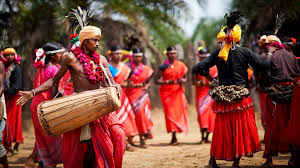
Costumes and Attire
The costumes worn during Karma Dance are vibrant and reflect the rich cultural heritage of the tribes. Women wear traditional sarees, often in bright colors like red, green, and yellow, symbolizing the colors of nature. The sarees are draped in a simple yet elegant style, and the women adorn themselves with tribal jewelry made of beads, shells, and silver.
Men typically wear dhotis and simple shirts, along with turbans. They may also carry traditional accessories like sticks or leaves, symbolizing their connection to the Karma tree and nature.
Significance of the Karma Tree
The Karma Tree, which is central to the dance, is believed to bring prosperity, fertility, and harmony. During the festival, branches of the Karma Tree are worshipped, and offerings are made to the tree to seek its blessings. The branches are often planted in the center of the dancing ground, and the dancers perform around them.
In tribal belief systems, the Karma Tree is more than just a tree; it is seen as a symbol of life itself, representing growth, renewal, and the cyclical nature of existence. The dance performed around this tree is a way of showing reverence to this powerful symbol.
Modern Relevance and Recognition
Though deeply rooted in tribal traditions, Karma Dance has gained recognition outside of its original cultural setting. It is often performed at national festivals, cultural programs, and even international events to showcase India’s rich cultural diversity. The dance has been preserved and promoted by cultural organizations and the government of Madhya Pradesh, ensuring that the younger generations continue to value and practice it.
People’s Genuine Experience with Karma Dance
For those who have witnessed Karma Dance live, the experience is described as immersive and magical. The harmonious blend of music, dance, and nature creates an atmosphere of joy and unity. Visitors often speak about the sense of community and connection they feel while watching the performance. The simplicity of the dance, combined with its deep cultural meaning, makes it an unforgettable experience.
Many describe how the rhythmic sounds of the drums and the synchronized movements of the dancers draw them into the celebration, even if they are not familiar with the tribal culture. The dance’s focus on nature, growth, and prosperity resonates with people from all walks of life, making it both a cultural and emotional experience.
Conclusion
The Karma Dance is not just a form of entertainment; it is a reflection of the spirituality, traditions, and values of the tribal communities of Madhya Pradesh. It celebrates the bond between humans and nature, with the Karma Tree at its center, symbolizing life, growth, and prosperity. Performed with joy and devotion, the dance is a testament to the rich cultural heritage of the region and continues to captivate audiences with its simple yet profound message.
Whether you are a lover of folk traditions, a student of culture, or someone seeking an authentic experience of India’s tribal life, witnessing the Karma Dance is an experience that will leave you enriched and inspired.
